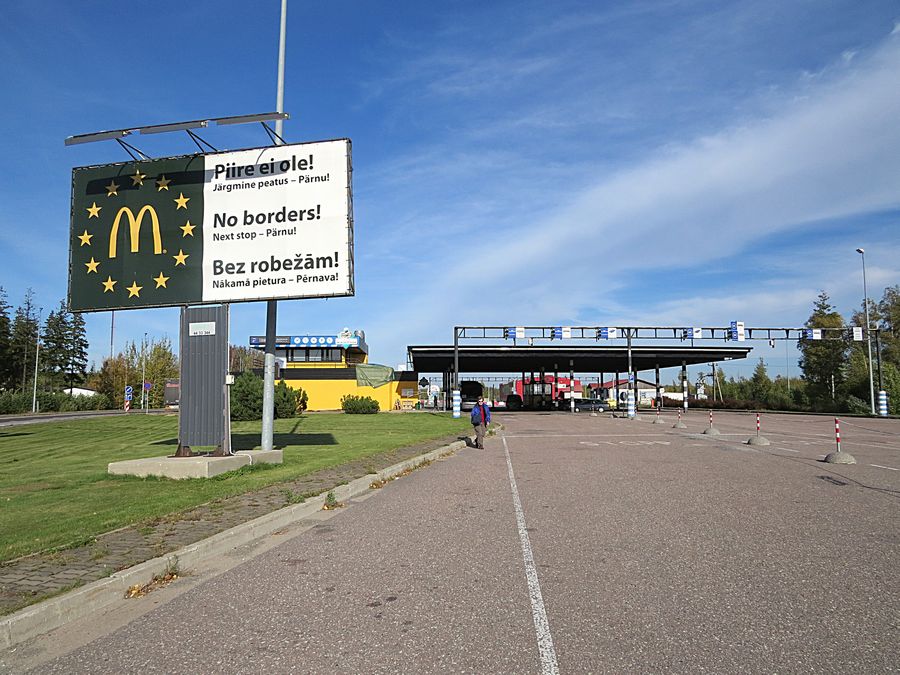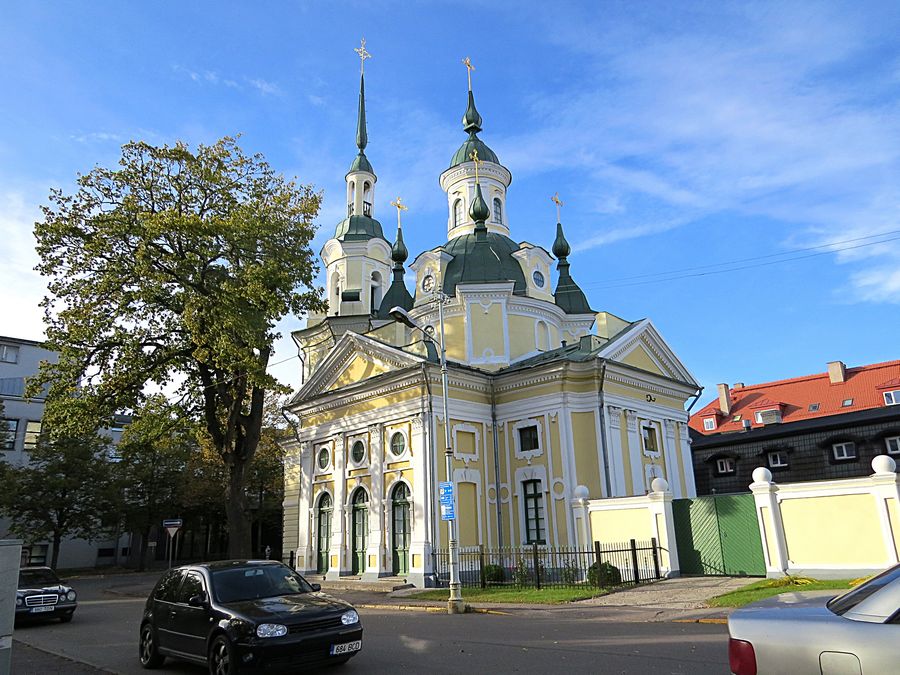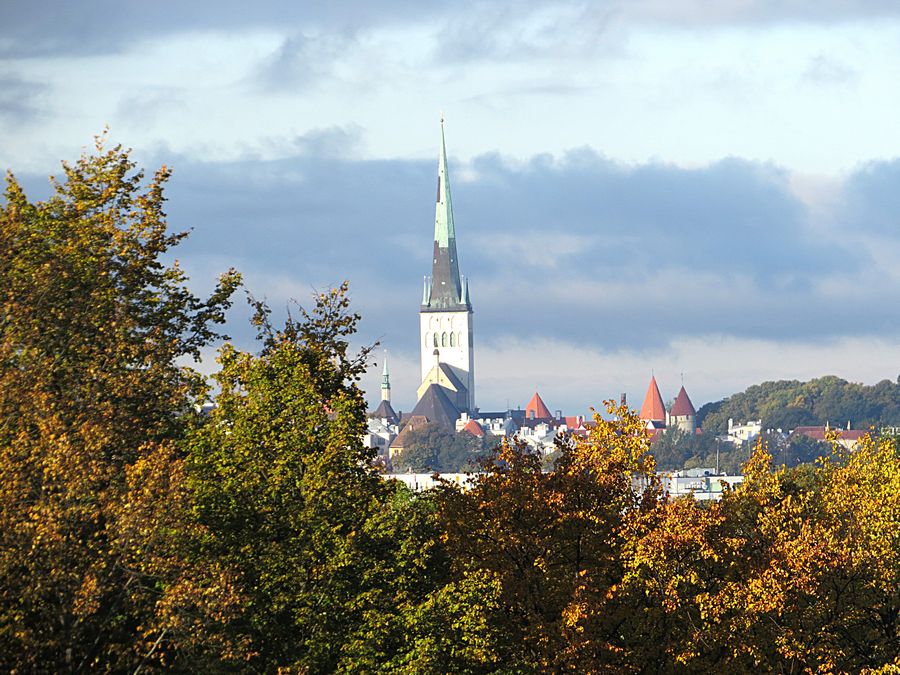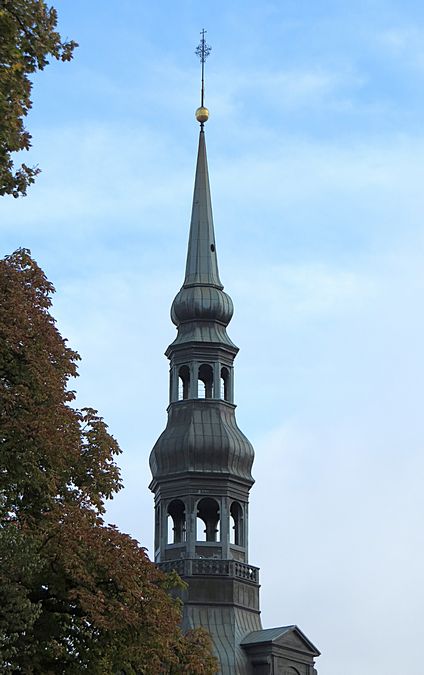The Baltic States, St. Petersburg, and Moscow
September 26 - October 14, 2013
Part Three - Estonia
Page One - Parnu and Talinn
Estonia is the smallest of the 3 States, with an area of
17,412 square miles and a population of about 1.3 million.
It is bordered by Latvia to the south, Russia, and the Baltic Sea. It is
also a very flat and low lying country but has the tallest "hill" in
the Baltic States, 1,040 foot Suur Munamagi. It has a variety of
largely Christian religions with perhaps 34% of the population
unaffiliated. The ancestors of today's Estonia were a Finnish people
with societies based on hunting and nature-centered religions. Like the
other 2 Baltic States, Christian Europe started trying to convert the region in
the late 1100s with Pope Celestine III calling for a crusade against the
northern pagans. The German Knights of the Sword that founded the
Cesis Castle in Latvia used Riga as a base to raid Estonia. By the mid 1200s,
Estonia was divided by the Danish controlled north and the German controlled
south. After the Livonian War, Sweden gained power in Estonia and governed
from the late 16th and 17th centuries, and modern day Estonia was united as
a single territory. Estonia fell to Russia in the 1700s and Czarist Russia ruled
for 200 years. After WWI, Estonia declared its independence. Although
Russia resisted at first, Russia eventually signed the Tartu Peace Treaty in 1920
ceding their claim to Estonia. The secret Molotov-Ribbentrop Pact between
Germany and Russia gave Estonia to Russia. Like the other Baltic states,
Germany occupied the
country
during WWII, and the Soviet Union took over
again at the end of the war until Estonia gained its independence from Russia in 1991.
Estonia joined NATO and the European Union in 2004 and switched to the Euro
in 2011.

At the boundary between Latvia and Estonia.
Obviously, McDonald's, which we saw everywhere
in the Baltics States and Russia, paid for the sign.

The Estonian flag. A historical interpretation of the colors
has blue representing ancient freedom, black symbolizing
lost independence and white, the promise of a brighter future.

City of Pärnu in southwestern Estonia on the coast of Pärnu
Bay, an inlet of the Gulf of Riga in the Baltic Sea. It is a
popular summer vacation resort with many hotels,
restaurants, and large beaches. In early October, it was
fairly quiet. This is the main street.

Mothers walking down a pedestrian street in Parnu,
one of which obviously has twins.
Many Finns, Estonians, and visitors from the former
Soviet Union come to Parnu seeking relaxation and Parnu's
famous mud treatments.

St. Catherine's Church in Parnu, a Russian Orthodox
Church. It was built in 1764-1768 and named after the
empress, Catherine the Great, who presented the church
to the city after a visit in 1764. It is built in a baroque style
and has been a source of inspiration for subsequent
orthodox church architecture in the Baltic states.

It displays a large central dome, flanked by
four smaller turrets and a western tower with a
needle-pointed spire.

City of Talinn, capital of Estonia.
It was transformed greatly after independence in
1991, with a restored Old Town from the medieval era
and a modern business district.

Talinn Song Festival Grounds
In 1869 Johann Voldemar Jannsen established the Estonian Song Festival
while the nation was still a province of the Russian Empire. This festival
was considered responsible for fostering an Estonian national awakening.
Song Festivals are still held every five years. The statue in the foreground,
is of a famous leader of the Song Festival
movement, Gustav Ernesaks.

In September 1988, 300,000 people (over 25% of the population)
squeezed in here for a songfest, risking their lives to publicly
demand independence in what became known as the Singing
Revolution. The Singing Revolution is a name for events between
1987-1991 that led to restoration of independence of Estonia, Latvia,
and Lithuania. The term was coined by Estonian activist Heinz Valk, in an
article a week after the 1988 spontaneous mass singing demonstrations on
these grounds. In 1991, as Soviet tanks attempted to stop
the progress towards independence, the Estonian Supreme
Soviet together with the Congress of Estonia proclaimed the
restoration of the independent state of Estonia. People acted as human
shields to protect radio and TV stations from Soviet tanks. Our
guide said her father participated in this effort. Through these
actions, Estonia regained its independence without any bloodshed.
On August 22, 1991, Iceland became the first nation in the
world to recognize the independence of Estonia.
There is a documentary called "The Singing Revolution"
that shares how, between 1987 and 1991, hundreds of
thousands of Estonians gathered publicly to sing forbidden
patriotic songs and share protest speeches, risking their lives
to show their desire for independence.

Talinn Bay on the Baltic Sea with the City of Talinn in the background.

View of Talinn from the beach


Pat standing on the beach

One of the many church spires that dot the Talinn skyline.
Link to Page Two - Old Town Talinn
Pat's Home Page